Boss & Co, in 1886, was under the management of Edward Fields Paddison. Paddison was a nephew of the founder, Thomas Boss, and was, then, sixty-six years old and just married for the second time.
Paddison was the subject of a published interview, while he was running Boss, in which he made his preference for back-action locks clear to G.T. Teasdale-Buckell (editor of Land & Water magazine).
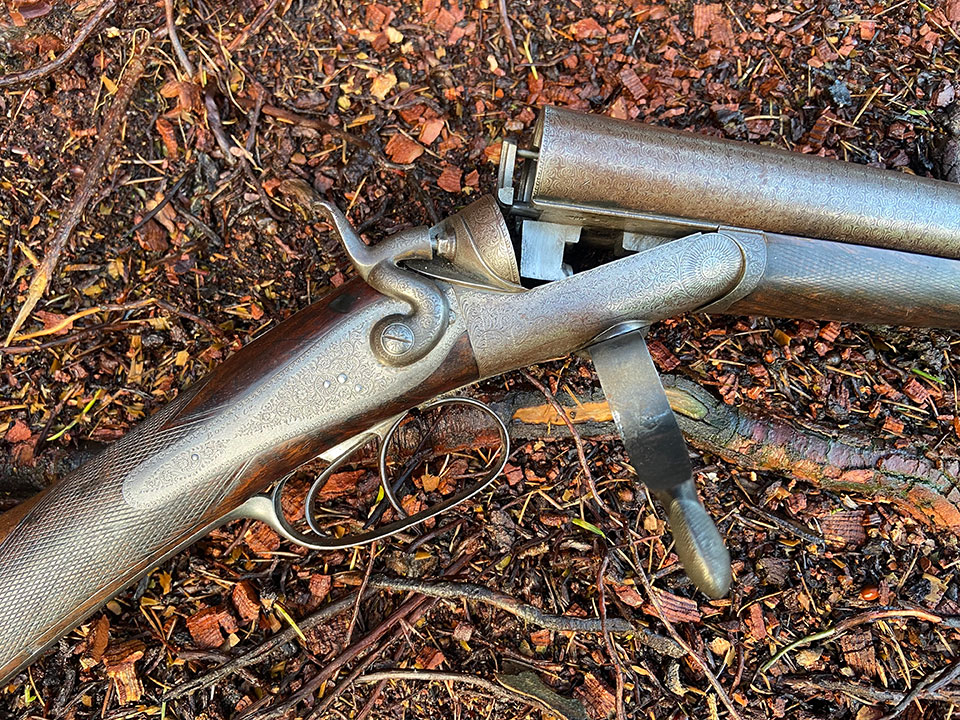
The Boss hammer gun we are to examine here was made late in Paddision’s life and, like the vast majority of Boss hammer guns made during his tenure is of this type. Though Paddison was an early advocate of Whitworth steel barrels, this gun has barrels of Damascus.
Advocacy of the novel was atypical of Paddison, as he advocated the inert Jones under-lever for longer than most competitors and championed the side-lever, while most of the gun trade preferred top-lever snap-actions. His adherence to the side-lever was likely influenced by his predecessor as manager of Boss (1857 -1866), Stephen Grant.
Paddison died in 1891, precipitating the ascent to full ownership of John Robertson, who would bring the ailing company back to rude health during his tenure and coin the well-worn catch phrase ‘Builders of Best Guns Only’.
Boss & Co 12-bore, number 3897 was built in 1886. At this time, Boss was making around 55 guns per annum. It has rebounding back-locks and a Jones screw-grip action with under-lever. It has 31” Damascus barrels with a flat, filed rib.
In total, Boss made just 962 hammer breech-loader non-ejectors between 1858 and 1890. A small number were pigeon guns, so this is a relatively unusual gun to encounter. The price of a gun like this at the time was around £45.00.
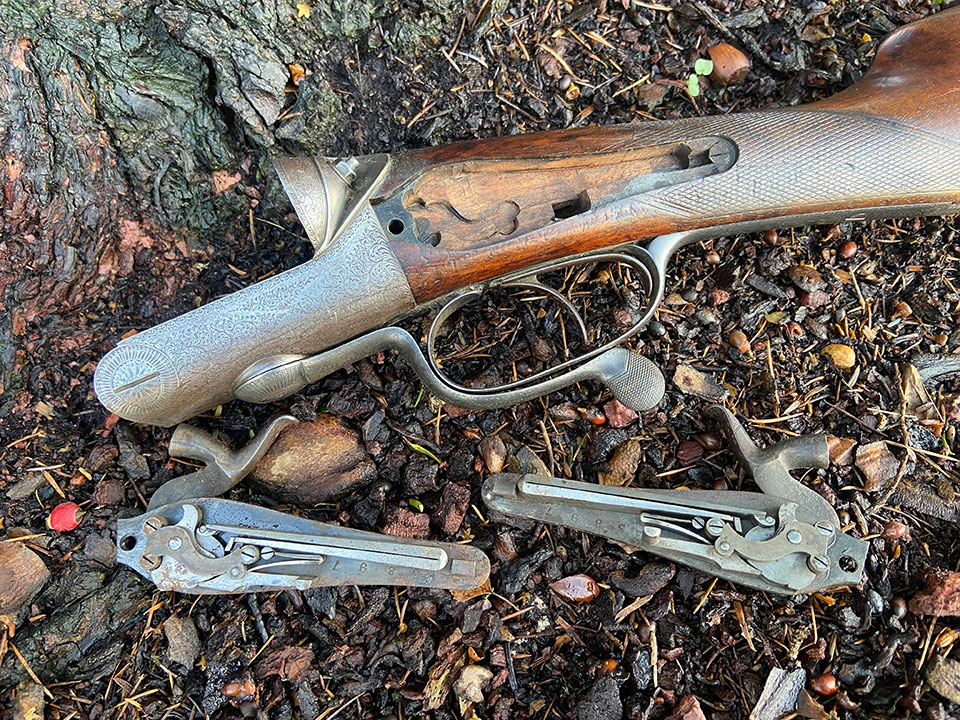
The gun turned up in a London auction, descried as ‘heavily pitted and dented’ and was unsold. I had been looking at the sale but was unable to attend due to commitments with a shooting party. I then did something I never do, and bought it unseen over the telephone a few days later.
My reasoning was that pigeon guns have generally thick barrels and there was a fair chance I’d be able to make it a shooter, even if I had to lap out a lot of metal.
Boss pigeon guns being hard to come by, it was an opportunity not likely to came again in a hurry, so it was worth a punt. In this game you have to be prepared to take the occasional risk and not lose sleep if it doesn’t work out.
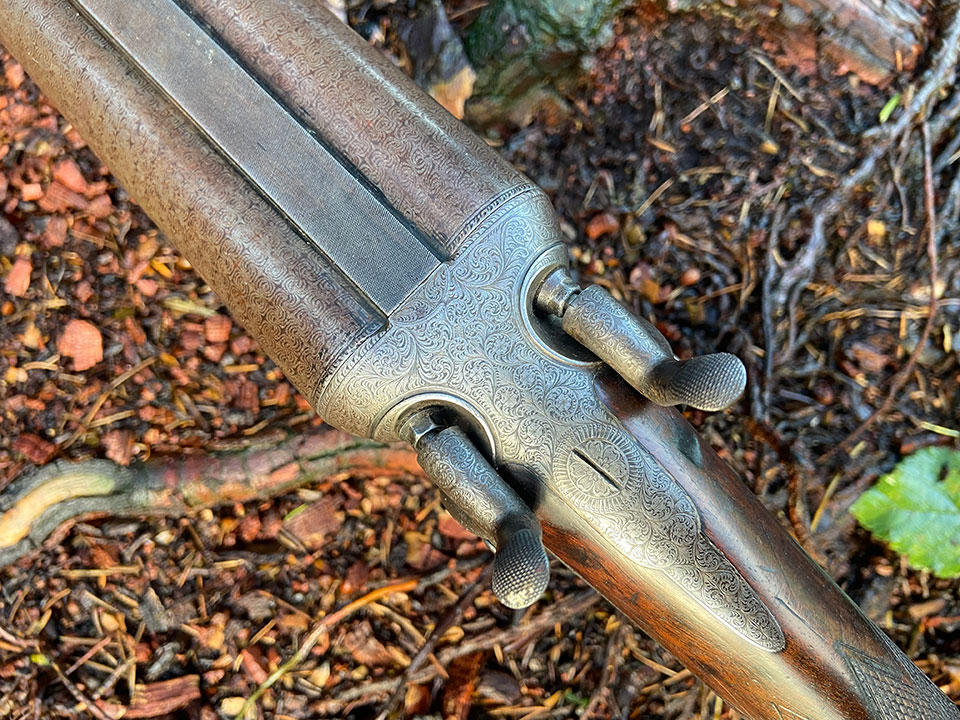
I dropped into Bonham’s to collect it and had a quick look at the bores. Pretty horrific was my first impression, with very deep pits and lots of nasty dents. The metal work was not bad for the age, though. No finish left but not polished or horribly worn. Jointing was actually very good.
The stock bothered me. Plain wood, no border around the lock plates and less worn at the hand than was the fore-end wood, which was also darker with oil ingress. The butt has straight-cut lines, rather than heel and toe plates and a chequered panel. Experience was speaking in my ear “historical re-stock”.
The shape is good, the inletting also, it is strong and it fits me well. However, it is not original to the gun. A slight spot of friction between the lever and the guard suggests a change of angle, which would be explained by a re-stock not 100% as originally set. I popped out the locks and the inletting, though neat, was not Boss-quality.
So, I have a re-stocked Boss & Co. 12-bore pigeon gun with dodgy barrels. Slightly disappointing, but such is the risk when buying 140 year-old guns unseen! Still, a shooter it could be, so my mission continues.
The first job was to see if the barrels could be saved. I have no delusions about making a profit out of this, I just fancied having a Boss in my rack and this configuration, with tightly choked 31” barrels, would work well as a high-pheasant gun.
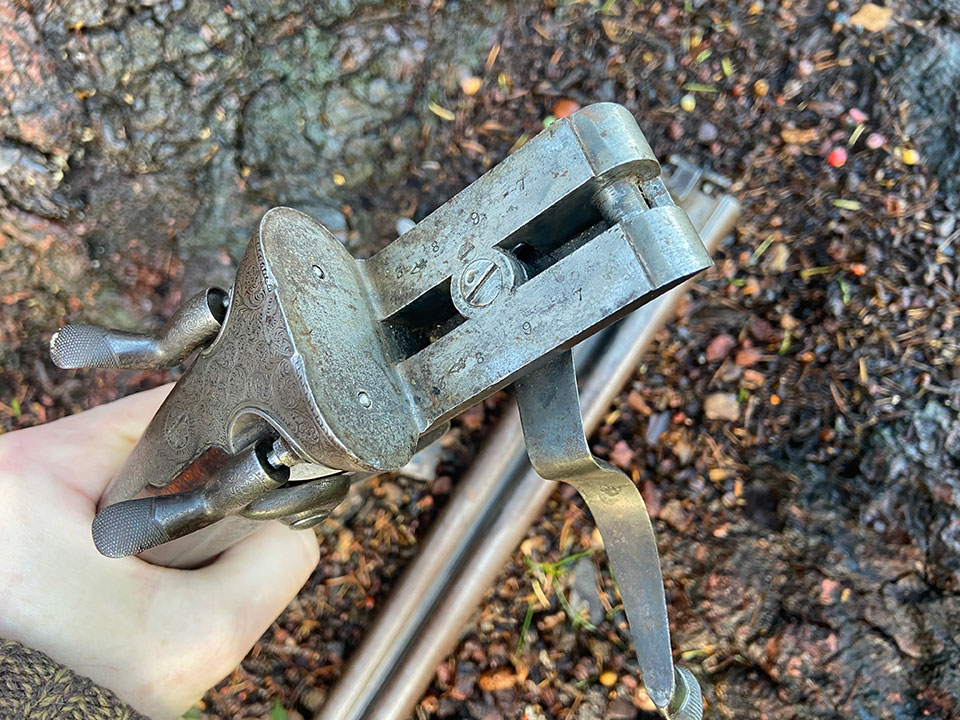
So, I sent the barrels off to Scotty to see if he could do anything with them. He can knock out the dents but those pits!? Measuring the walls I found they were generally good; gauging in the high twenties and low thirties, but going down to 20 thou’ in the bottom of the deepest pit. How would those measurements respond to five thou’ of lapping? Only time would tell.
If the barrels work out, the woodwork will go in for a bit of restoration. With dents raised, the chequer can be carefully re-cut to the flat-top original profile, while a few coats of red-oil soaked in to enhance the colour and figure before the application of a traditional oil finish will make the best of what figure there is.
Apart from a good strip and clean, the rest of the gun is in good order and will be ready to go. There is no need to try and make a gun with a history look new, as so many restorers (especially in the States) do.
My task is to make the gun look and work the best it can, while accepting and appreciating the history that some of its imperfections show. With that completed, it should, once more return to the field and resume its work.
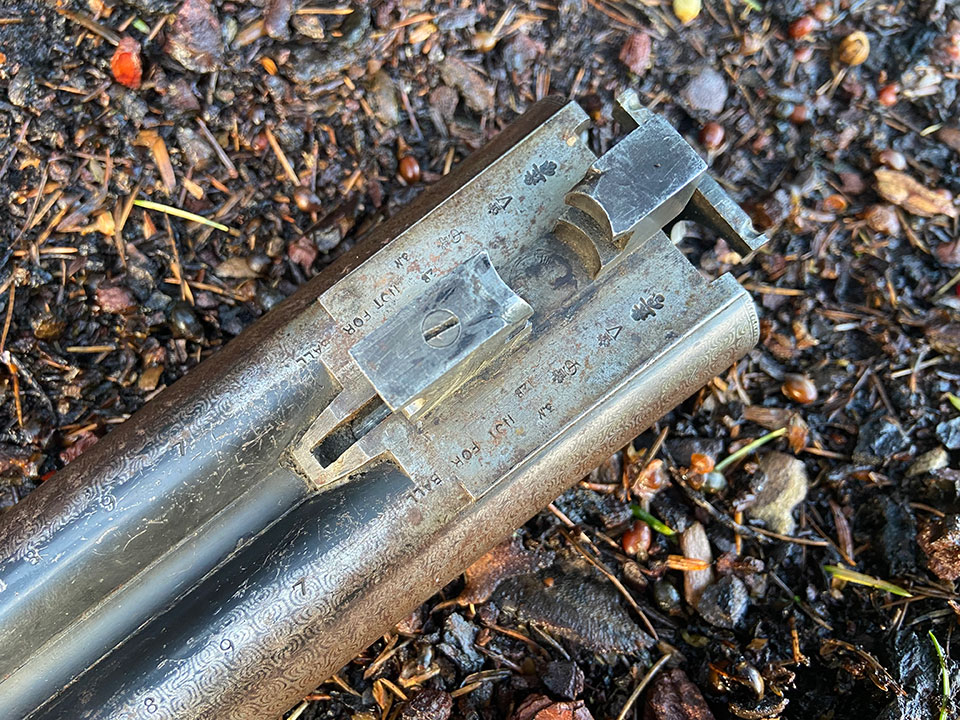
Since writing the bulk of this piece, my barrel maker has come back with the sad news that the barrels are beyond salvation. The pits are so deep that trying to knock out those dents just makes them worse, as the lifter cannot make decent contact from below. Despite a few hours of hard work and with the best will in the world, these are scrap.
In truth, the gun should never have been offered for sale as 'in proof' with such awful pitting but, as always: 'buyer beware' at auction. This was simply a gamble that did not pay off.
Published by Vintage Guns Ltd on (modified )




